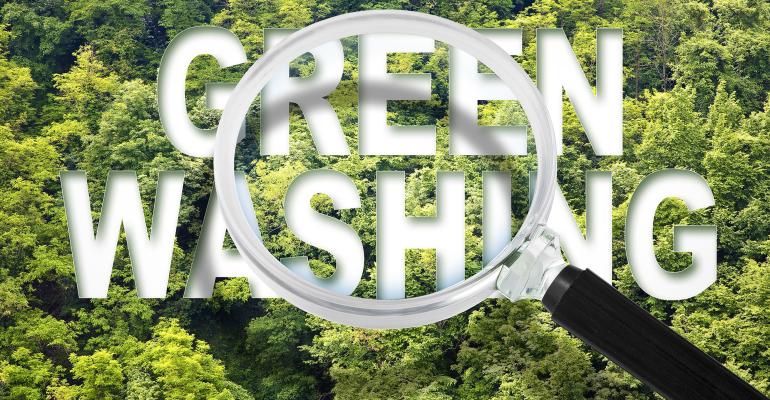The event industry is awash in sustainability issues, and everyone seems to have a “solution” to the fact that meetings and events are hard on the planet. Many of these solutions are well-intentioned, but not all are as effective as they claim or as people believe.
Greenwashing refers to deliberately misleading sustainability claims. However, sometimes it’s a case of unintended “green wishing,” where meeting pros are overly optimistic when looking for fast, simple solutions.
Like get-rich-quick and lose-weight-fast claims, be careful about solutions that are too easy. Reducing the environmental footprint of our events is not complicated, but this is a newer area of expertise for event professionals and we can be sold flashy promises that don’t deliver.
So how can you determine if the product or service you’re considering is an effective way to combat the climate emergency? Here are three things to look for and consider:
1. Ask about data and/or certification
Companies that offer low- or zero-carbon emission solutions must do the math to make this claim—and you should ask to see it. If they do not have it, they may have had an independent third party do the calculations for certification. But if they have no data and no certification, that’s a red flag. There are a lot of certification bodies out there for different aspects of events, and we’ll do a future article specifically on certification, but you can start by looking for certifications that are approved by the Global Sustainable Tourism Council. or the U.S. Green Building Council’s LEED certification.
2. Downstream versus upstream efforts
Downstream efforts to reduce an event’s environmental footprint, such as recycling, composting, offsets, and reuse of materials, address the negative impacts created by the event. These are good efforts, but unless they are paired with upstream solutions, they don’t make much of a dent in the overwhelming backlog of emissions that our modern meetings produce.
Upstream solutions tackle a problem at its source. For meeting professionals this might include changing to low-emission protein sources (fish or poultry versus beef), using reusable service items (china and glass rather than disposable items), and engaging with energy- and water-smart programs, which focus on energy efficiency like LEED buildings or target water usage to save precious resources. (To learn about water conservation options, check out Alliance for Water Efficiency.)
With upstream solutions, the bottom line is that you’re avoiding the problem rather than having to solve it. This is usually simpler and less expensive in the long term.
3. Over-reliance on offsets
Offsets are a great option if they are used after you have taken steps to reduce waste and lower emissions. Offsets are projects that a person or organization can invest in that remove carbon dioxide from the atmosphere to compensate for emissions made elsewhere (for example, air travel to a meeting). Offset investments might include financial contributions to a green-energy project or planting of trees.
The math around offsets can get a bit complicated (see below); you should also understand that offsets are not a complete solution to building a low-carbon event.
4. Look for caution in a supplier’s claims. Sustainability promises should not be embellished or overstated. Obstacles or problems should be honestly acknowledged. It’s a principle of sustainability reporting to be conservative, which means that if there are alternative interpretations of the data, you use the more cautious choice. Climate accounting involves a fair amount of estimating because we can’t measure the actual greenhouse gases from an event; they are calculated using an emissions factor. There should be moderation in emission-reduction claims and a fair presentation of any obstacles or issues involved with doing so. For example, if you bought trees to plant as a carbon offset, what percentage of those trees are not likely to grow to maturity—and how is that shortfall accounted for in the reporting?
5. Documentation is key for sustainability claims. This is important, as some event clients require emissions documentation from meetings and travel as part of their ESG goals. Just like a fiscal reconciliation, emissions from various suppliers must be tallied, and planners need documentation that supports their emissions calculations in order to report back to stakeholders.
You can start conducting better sustainability reporting by putting questions regarding these elements into your RFP—and include a statement that your organization gives preference to vendors who can supply evidence of their environmental-impact claims.
Natalie Lowe, CMM, CRL, is a sustainable meeting professional with 30 years of experience. She oversees The Sustainable Events Forum and can be reached at [email protected].





